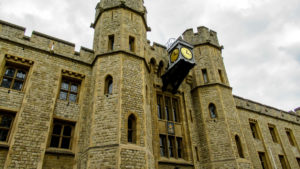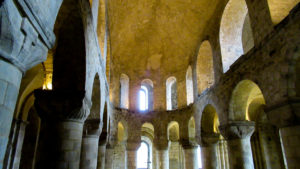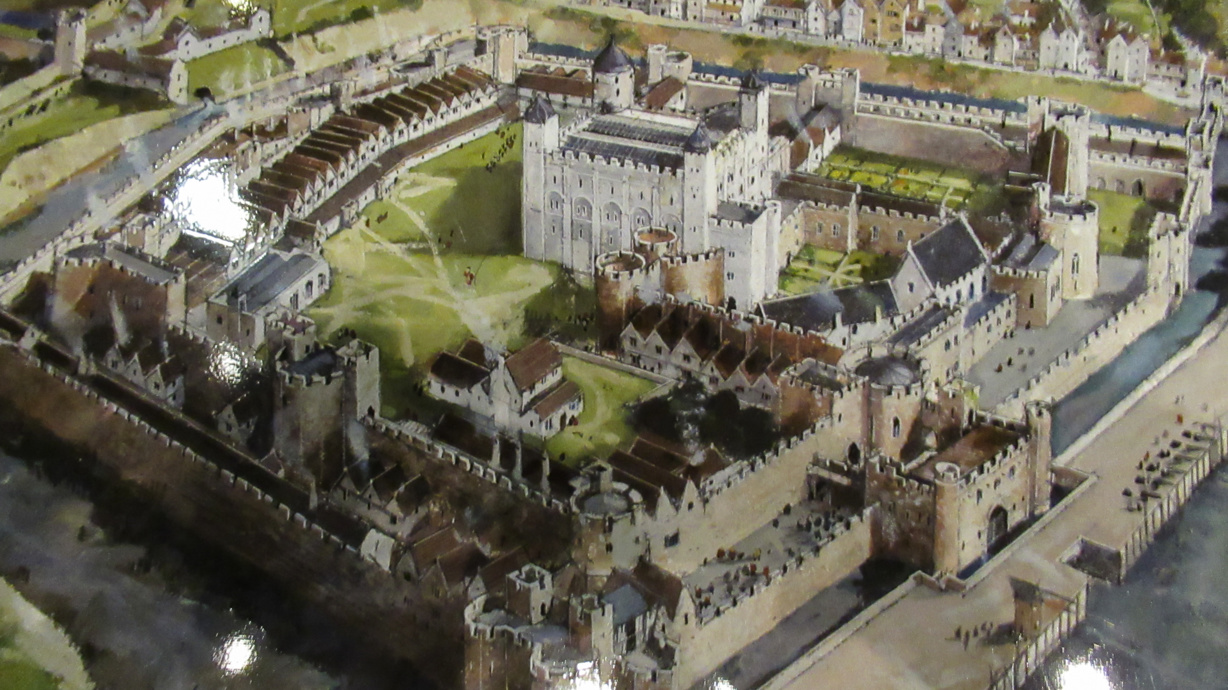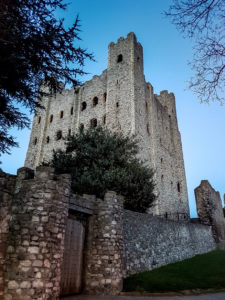 Victorious at the Battle of Hastings on 14 October 1066, the invading Duke of Normandy, William the Conqueror, spent the rest of the year securing his holdings by fortifying key positions. He founded several castles along the way, but took a circuitous route toward London; only when he reached Canterbury did he turn towards England’s largest city. As the fortified bridge into London was held by Saxon troops, he decided instead to ravage Southwark before continuing his journey around southern England. A series of Norman victories along the route cut the city’s supply lines and in December 1066, isolated and intimidated, its leaders yielded London without a fight. Between 1066 and 1087, William established 36 castles, although references in the Domesday Book indicate that many more were founded by his subordinates. The new ruling elite undertook what has been described as “the most extensive and concentrated program of castle-building in the whole history of feudal Europe”. They were multi-purpose buildings, serving as fortifications (used as a base of operations in enemy territory), centers of administration, and residences.
Victorious at the Battle of Hastings on 14 October 1066, the invading Duke of Normandy, William the Conqueror, spent the rest of the year securing his holdings by fortifying key positions. He founded several castles along the way, but took a circuitous route toward London; only when he reached Canterbury did he turn towards England’s largest city. As the fortified bridge into London was held by Saxon troops, he decided instead to ravage Southwark before continuing his journey around southern England. A series of Norman victories along the route cut the city’s supply lines and in December 1066, isolated and intimidated, its leaders yielded London without a fight. Between 1066 and 1087, William established 36 castles, although references in the Domesday Book indicate that many more were founded by his subordinates. The new ruling elite undertook what has been described as “the most extensive and concentrated program of castle-building in the whole history of feudal Europe”. They were multi-purpose buildings, serving as fortifications (used as a base of operations in enemy territory), centers of administration, and residences.
William sent an advance party to prepare the city for his entrance, to celebrate his victory and found a castle; in the words of William’s biographer, William of Poitiers, “certain fortifications were completed in the city against the restlessness of the huge and brutal populace. For he, William, realized that it was of the first importance to overawe the Londoners”. At the time, London was the largest town in England; the foundation of Westminster Abbey and the old Palace of Westminster under Edward the Confessor had marked it as a center of governance, and with a prosperous port it was important for the Normans to establish control over the settlement. The other two castles in London – Baynard’s Castle and Montfichet’s Castle – were established at the same time. The fortification that would later become known as the Tower of London was built onto the south-east corner of the Roman town walls, using them as prefabricated defenses, with the River Thames providing additional protection from the south. This earliest phase of the castle would have been enclosed by a ditch and defended by a timber palisade, and probably had accommodation suitable for William.
Most of the early Norman castles were built from timber, but by the end of the 11th century a few, including the Tower of London, had been renovated or replaced with stone. Work on the White Tower – which gives the whole castle its name is usually considered to have begun in 1078, however, the exact date is uncertain. William made Gundulf, Bishop of Rochester, responsible for its construction, although it may not have been completed until after William’s death in 1087. The White Tower is the earliest stone keep in England and was the strongest point of the early castle. It also contained grand accommodation for the king. At the latest, it was probably finished by 1100 when Bishop Ranulf Flambard was imprisoned there. Flambard was loathed by the English for exacting harsh taxes. Although he is the first recorded prisoner held in the Tower, he was also the first person to escape from it, using a smuggled rope secreted in a butt of wine. He was held in luxury and permitted servants, but on 2 February 1101, he hosted a banquet for his captors. After plying them with drink, when no one was looking he lowered himself from a secluded chamber, and out of the Tower. The escape came as such a surprise that one contemporary chronicler accused the bishop of witchcraft.
The Anglo-Saxon Chronicle records that in 1097 King William II ordered a wall to be built around the Tower of London; it was probably built from stone and likely replaced the timber palisade that arced around the north and west sides of the castle, between the Roman wall and the Thames.
The death in 1135 of Henry I left England with a disputed succession; although the king had persuaded his most powerful barons to swear support for Empress Matilda, just a few days after Henry’s death Stephen of Blois arrived from France to lay claim to the throne. The importance of the city and its Tower is marked by the speed at which he secured London. The castle, which had not been used as a royal residence for some time, was usually left in the charge of a Constable, a post held at this time by Geoffrey de Mandeville. As the Tower was considered an impregnable fortress in a strategically important position, possession was highly valued. Mandeville exploited this, selling his allegiance to Matilda after Stephen was captured in 1141 at the Battle of Lincoln. Once her support waned, the following year he resold his loyalty to Stephen. Through his role as Constable of the Tower, Mandeville became “the richest and most powerful man in England”. When he tried the same ploy again, this time holding secret talks with Matilda, Stephen had him arrested, forced him to cede control of his castles, and replaced him with one of his most loyal supporters. Until then the position had been hereditary, originally held by Geoffrey de Mandeville, but the position’s authority was such that from then on it remained in the hands of an appointee of the monarch. The position was usually given to someone of great importance, who might not always be at the castle due to other duties. Although the Constable was still responsible for maintaining the castle and its garrison, from an early stage he had a subordinate to help with this duty: the Lieutenant of the Tower. Constables also had civic duties relating to the city. Usually, they were given control of the city and were responsible for levying taxes, enforcing the law, and maintaining order. The creation in 1191 of the position of Lord Mayor of London removed many of the Constable’s civic powers, and at times led to friction between the two.









